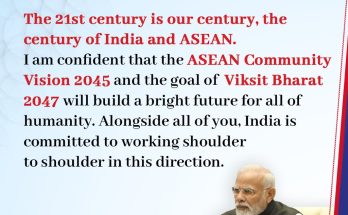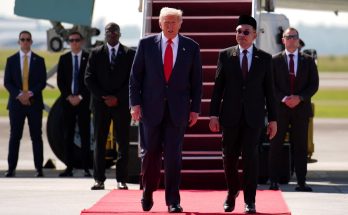 The efficacy and exactness of poll surveys and opinion polls will be put to severe test on December 8. The final tally would either demolish their claims or would prove sceptics wrong. Almost all polls have predicted the victory of the BJP in Chhattisgarh, Madhya Pradesh and Rajasthan and a hung house in Delhi.
The efficacy and exactness of poll surveys and opinion polls will be put to severe test on December 8. The final tally would either demolish their claims or would prove sceptics wrong. Almost all polls have predicted the victory of the BJP in Chhattisgarh, Madhya Pradesh and Rajasthan and a hung house in Delhi.
The second Sunday in December is going to be a day of joy for some and sorrow for many when election results of the assembly elections in five states would become clear. It is true of any electoral battle since the winner is always one, and losers many. The poll outcomes are bound to trigger a fresh round of feverish speculation on who will win the throne of Delhi in the summer of 2014.
The elections began on November 11 in Chhattisgarh and would end on December 4 in Delhi. People of Madhya Pradesh and Rajasthan have cast their ballots on November 25 and December 1 respectively.
Semi-final for 2014 poll battle?
 The assembly elections are being touted as semi-final to the general election, which is expected to be held sis months hence. Since 72 Lok Sabha seats are at stake in four states of the Hindi heartland, the impact of the much-hyped Narendra Modi phenomenon would also be tested. At the same time, a fair assessment would be available whether huge rallies of Modi, the BJP’s star campaigner, in these states have helped or not. The BJP’s performance in the four states, where it is more or less in direct contest with the Congress, would be a fair indicator of the next government in New Delhi.
The assembly elections are being touted as semi-final to the general election, which is expected to be held sis months hence. Since 72 Lok Sabha seats are at stake in four states of the Hindi heartland, the impact of the much-hyped Narendra Modi phenomenon would also be tested. At the same time, a fair assessment would be available whether huge rallies of Modi, the BJP’s star campaigner, in these states have helped or not. The BJP’s performance in the four states, where it is more or less in direct contest with the Congress, would be a fair indicator of the next government in New Delhi.
Local versus national
Local issues of governance, public delivery and non-performance of the ruling dispensation in these states have been intensely debated and contested by political parties and people at large. Often enough in the past, legislators whose main constitutional responsibility is to legislate, discuss and debate on issues concerning state and people, are rewarded or punished by the electorate on subjects which do not come directly under their jurisdiction.
While Nagar Palikas (municipalities) or local self-governments are often blamed for the non-performance and bad state of roads, sewer and water supply, the lack of synergy between these bodies and the state governments is equally responsible for this sorry state of affairs. But the government of the day and MLAs invariably end up paying a heavy price.
The electorate at large fails to make distinction and is unable to fix the real responsibility for their day-to-day woes of non-functioning schools, hospitals and other public services and that is where priorities have come to be distorted. While the electorate must demand more funds from the state government and their legislators to enable the local self governments for proper and adequate delivery of public services, people at large must hold municipal representatives for their local woes.
A classic example of this is often at display in the national capital where apart from the state government, New Delhi Municipal Corporations (NDMC), Municipal Corporation of Delhi (MCD) and Delhi Cantonment are responsible for the state of affairs. Even the Central government has a say in the running of Delhi. The MCD, which was bifurcated into three elected bodies recently, is responsible for almost 90 per cent area and population of Delhi.
Contenders and Challengers
At present, the Congress rules in Delhi and Rajasthan. Chhattisgarh and Madhya Pradesh are ruled by the BJP. Chief Minister Sheila Dikshit is seeking popular mandate in Delhi for the fourth times in succession while her counterpart in Rajasthan Ashok Gehlot is fighting to remain in power second time in a row.
Chhattisgarh Chief Minister Raman Singh, in power since 2003, is hoping to remain in power for the third time. Similarly in Madhya Pradesh, Chief Minister Shivraj Singh Chouhan, in power since November 2005, has left no stone unturned to regain people’s confidence in his leadership. In 2003, the BJP had wrested power from the Congress government of Chief Minister Digvijay Singh under the leadership of Uma Bharti who could remain in the chief ministerial chair for a little over eight months. Chouhan took over reins of power from Babulal Gaur who had replaced Bharti in 2004.
The Big Battle in Delhi
 In Delhi, the electoral battle is mainly between the ruling Congress and the BJP but a new party – Aam Admi Party (AAP)- is leaving no stone unturned to make the contest three-cornered. In 2008, the Congress had won 43 seats securing 40.31% votes while the BJP had won 23 seats with a vote percentage of 36.34. The BSP had contested 69 seats winning two seats with a poll percentage of 14.05.
In Delhi, the electoral battle is mainly between the ruling Congress and the BJP but a new party – Aam Admi Party (AAP)- is leaving no stone unturned to make the contest three-cornered. In 2008, the Congress had won 43 seats securing 40.31% votes while the BJP had won 23 seats with a vote percentage of 36.34. The BSP had contested 69 seats winning two seats with a poll percentage of 14.05.
The AAP has emerged out of the crucible of civil society protests against corruption and black money in 2011 and 2012. Non-Governmental Organisations (NGOs) like India Against Corruption were at the vanguard of the protests that erupted in many cities and towns including New Delhi. One section of the civil society movement decided to float the political party and its leader Arvind Kejriwal is leading the party. The AAP has decided to field candidates in all the 70 seats of Delhi Assembly.
The AAP is attracting all those voters who are both angry and disgruntled with the ruling party and it would be interesting to watch whether it dents the chances of the BJP or the Congress because in normal course anger of the electorate helps the opposition party, but it could be different this time. Ahead of the polls, an upbeat Kejriwal, who is contesting from Delhi Chief Minister Sheila Dikshit’s New Delhi constituency, has promised that the election will not be an ordinary election but “a movement and a revolution.”
In Mizoram, where a Congress government has been in power since 2008, Chief Minister Pu Lalthanawala is seeking a second term. He had replaced Pu Zoramthanga who ruled the state for a decade. Lalthanawala is going to be challenged by Mizo National Front.
The Modi Myth and Reality
T he state assembly elections are being held at a time when a debate is raging on in the country about vote-fetching abilities of BJP’s prime ministerial candidate and Gujarat Chief Minister Narendra Modi. He has been addressing well-attended public rallies in all the five states, and has emerged a powerful brand for the chief opposition to stake its claims to power at the Centre.
he state assembly elections are being held at a time when a debate is raging on in the country about vote-fetching abilities of BJP’s prime ministerial candidate and Gujarat Chief Minister Narendra Modi. He has been addressing well-attended public rallies in all the five states, and has emerged a powerful brand for the chief opposition to stake its claims to power at the Centre.
The election results are, therefore, bound to be interpreted as the BJP’s prime ministerial candidate’s full endorsement, partial rejection or complete rejection. The results would also set the tone of the general elections as a BJP victory in all the four Hindi-speaking states of north India would be projected as a triumph of the Modi brand of politics.
Whether anti-incumbency factor is going to play a major role in determining the outcome of the elections is a proposition that is going to be tested this time as in the last couple of years, ruling parties have defied the recent logic of anti-incumbency and have romped home. Good governance has been respected by the electorate and has thus forced the political leaders to pay more attention to their governing styles.
While in four northern states, the Congress and the BJP seem to be poised for a close contest, a large section of media and opinion polls suggest that the BJP is enjoying an edge over its rival Congress.
Although opinion is divided on the issue, many seasoned political observers predict that the state election results will set the trend for the national elections. The outcome will indicate whether the decision of the BJP and the RSS to project Narendra Modi as the prime ministerial candidate before the assembly elections was right or wrong as the fate of the two national parties in four Hindi-speaking states of Chhattisgarh, Delhi, Madhya Pradesh and Rajasthan will surely provide pointers to the BJP’s overall appeal in rest of the country.
(The views expressed in this article are solely those of the author).
Author Profile
- India Writes Network (www.indiawrites.org) is an emerging think tank and a media-publishing company focused on international affairs & the India Story. Centre for Global India Insights is the research arm of India Writes Network. To subscribe to India and the World, write to editor@indiawrites.org. A venture of TGII Media Private Limited, a leading media, publishing and consultancy company, IWN has carved a niche for balanced and exhaustive reporting and analysis of international affairs. Eminent personalities, politicians, diplomats, authors, strategy gurus and news-makers have contributed to India Writes Network, as also “India and the World,” a magazine focused on global affairs.
Latest entries
 India and the WorldNovember 26, 2025G20@20: Africa’s Moment – The Once and Future World Order
India and the WorldNovember 26, 2025G20@20: Africa’s Moment – The Once and Future World Order DiplomacyOctober 4, 2025UNGA Resolution 2758 Must Not Be Distorted, One-China Principle Brooks No Challenge
DiplomacyOctober 4, 2025UNGA Resolution 2758 Must Not Be Distorted, One-China Principle Brooks No Challenge India and the WorldJuly 26, 2025MPs, diplomats laud Operation Sindoor, call for national unity to combat Pakistan-sponsored terror
India and the WorldJuly 26, 2025MPs, diplomats laud Operation Sindoor, call for national unity to combat Pakistan-sponsored terror India and the WorldJuly 25, 2025When Fire Ends, Diplomacy Begins
India and the WorldJuly 25, 2025When Fire Ends, Diplomacy Begins







